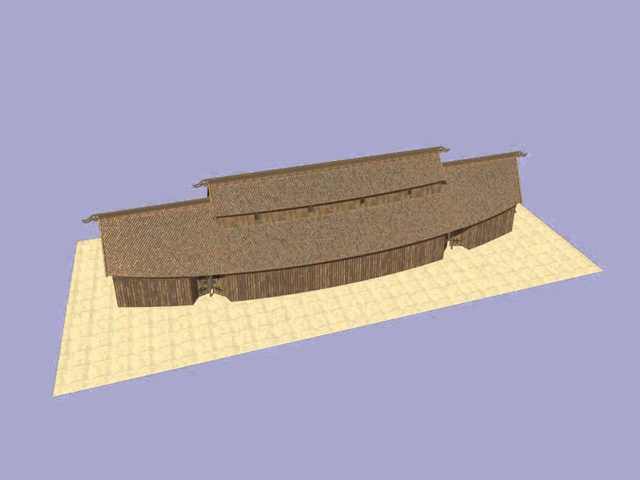Near Vadstena in Östergötland in southern Sweden, archaeologists have uncovered a large Viking Age hall, Stockholm University recently reported ( the press release in English) . The local so-called Aska mound was previously regarded by researchers as an ordinary burial mound. It is 55 meters long at its surface, 18 meters wide and an average of 3 meters high. During investigations in the mid-1980s, both a pile of stones typical of graves and the remains of horse bones were found in it – horses were often buried with their owners in the Viking Age. In any case, it was certain that the oval hill, flat on the top, is not of natural origin, but was probably built by humans between 660 and 880 AD.
Archaeologists from the Universities of Stockholm and Umeå have now examined this mound again. To do this, they used ground-penetrating radar, which allows subsurface structures to be identified and displayed in high resolution without digging. The post holes of a three-nave building with a total length of 47.5 meters became visible. The largest width of the double-walled nave was 14 meters, 9 meters inside. Approximately in the middle of the building, a structure could be identified that probably represents a hearth of about 2.5 meters in diameter. Four entrances, two opposite each other at the east and west ends of the hall, as well as ramps leading up to these can be seen. Post holes outside the building in front of the south-west entrance indicate that it had a covered porch.
Thus it is now established that the Aska mound is an unusually long platform for a great hall, comparable to those found in Scandinavia at other important Viking Age sites, such as Sigtuna in Sweden or Lejre in Denmark Island Zealand. The new find has the greatest structural similarities with the King’s Hall excavated in Old Uppsala ( you can find a 3D model of this hall here ).
The Aska Hall is likely to have been built immediately after the mound itself was completed, and thus in the 8th or 9th century. Finding such a magnificent building suggests that Aska was a Viking Age seat of petty kings who ruled over Östergötland. Several graves with rich offerings, which had already been found earlier near the hill, speak in favor of this interpretation. However, there are no written sources about this apparently powerful ruling family, which had enormous resources at its disposal.

